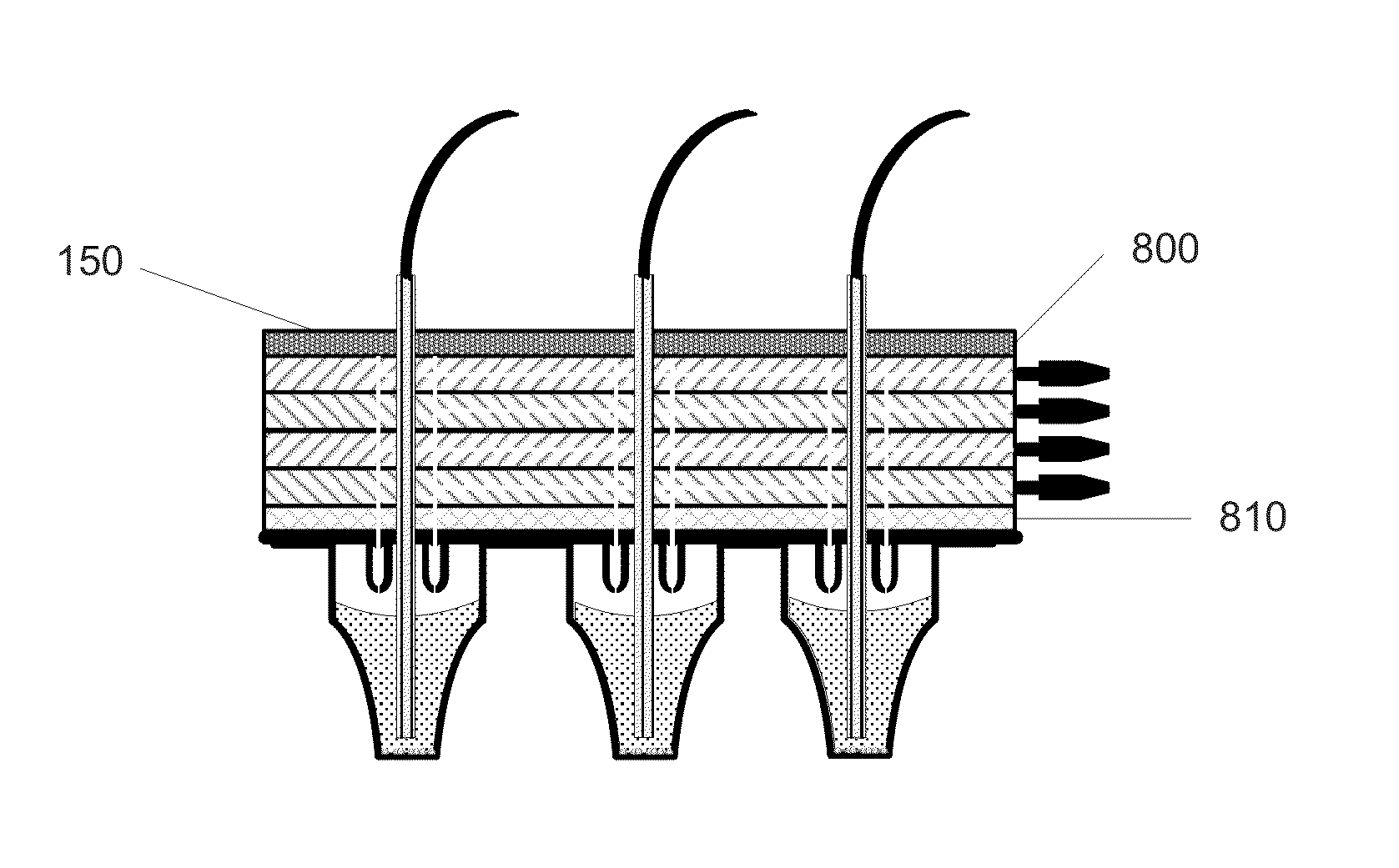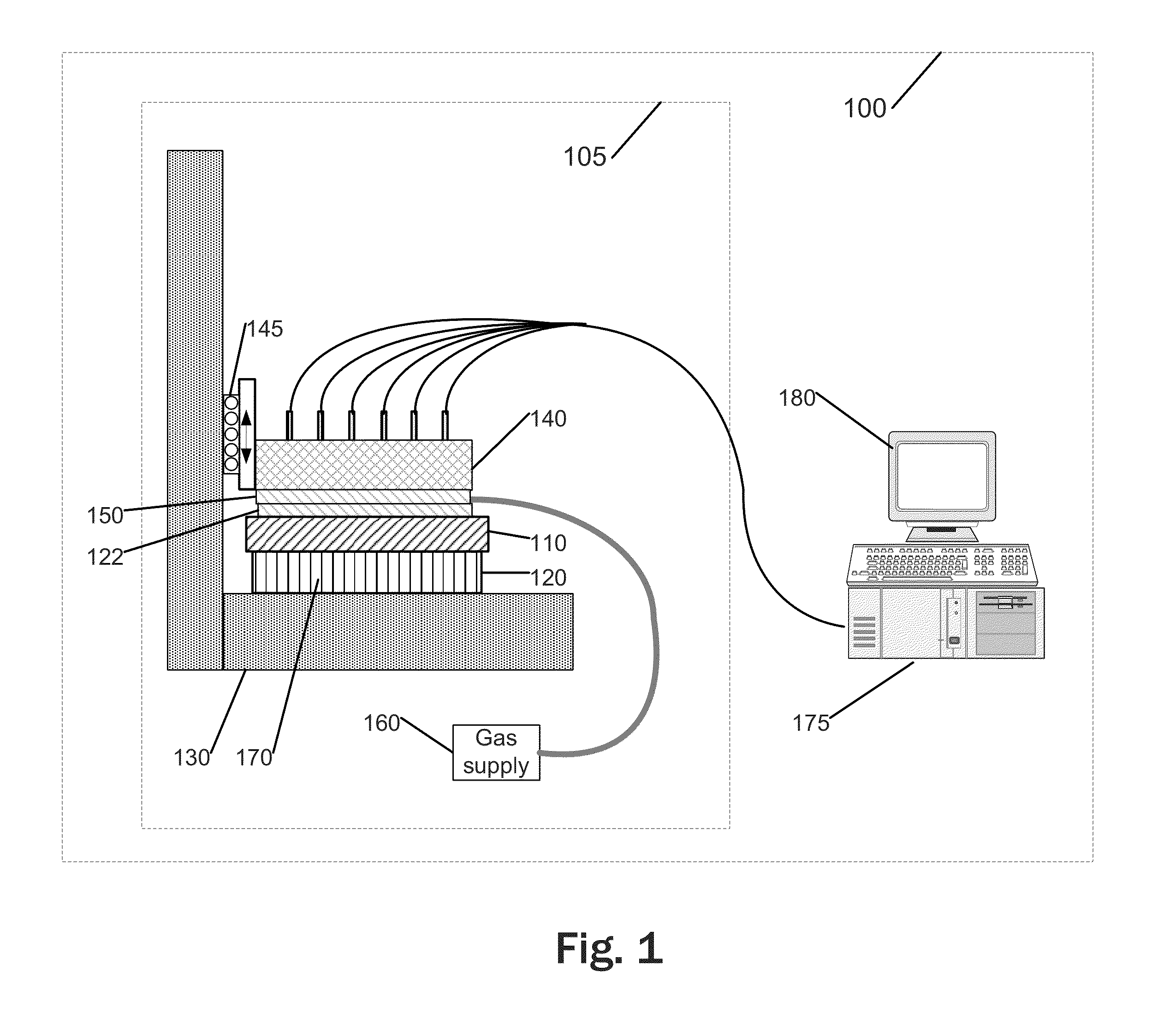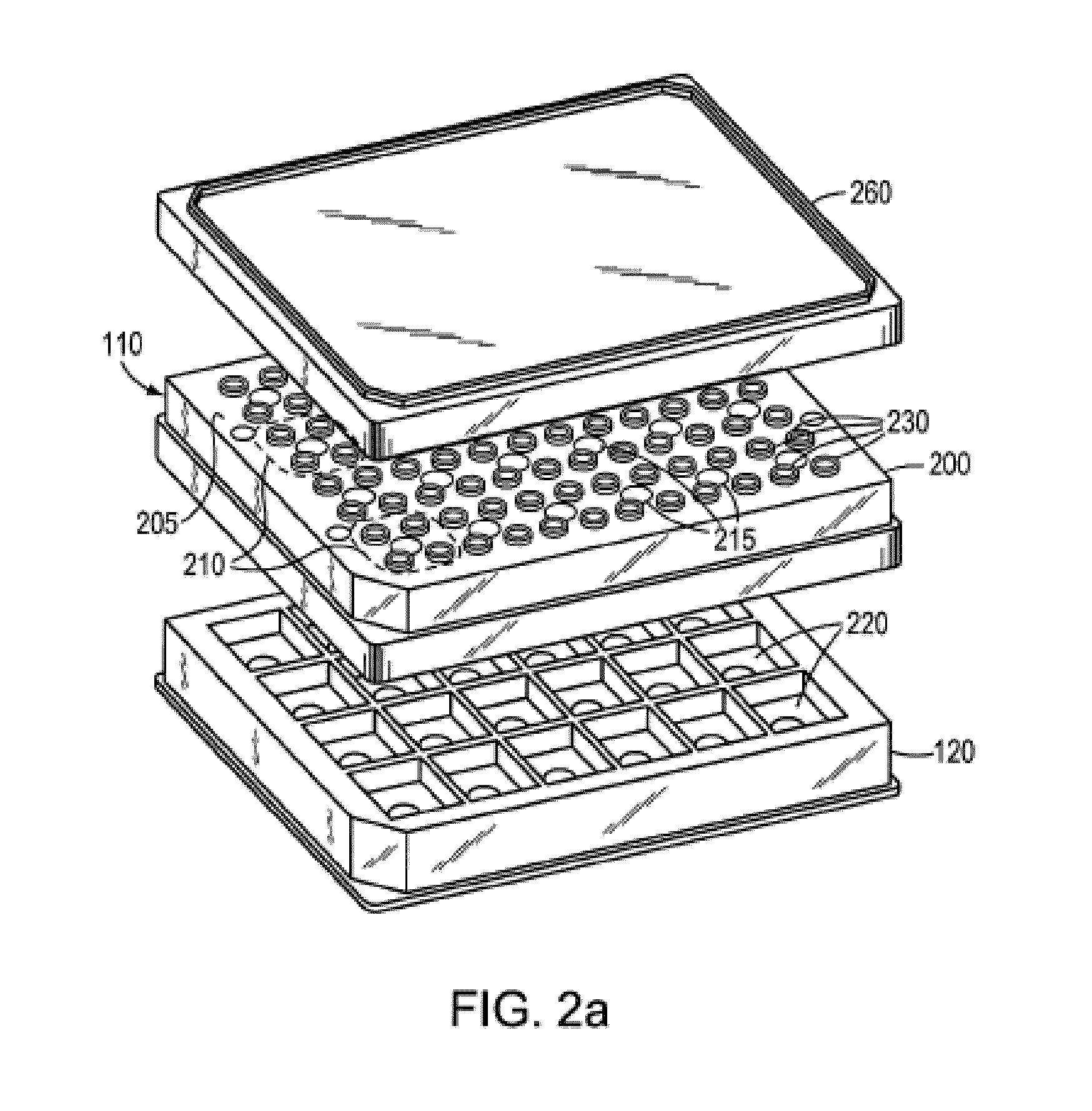Cell analysis apparatus and method
a cell analysis and apparatus technology, applied in the field of cell analysis apparatus and method, can solve the problems of measurement error and required equilibrium period, and achieve the effects of reducing equilibrium time, eliminating cross-contamination, and low cos
- Summary
- Abstract
- Description
- Claims
- Application Information
AI Technical Summary
Benefits of technology
Problems solved by technology
Method used
Image
Examples
example 1
Evaluation of a 96 Well Drug Delivery Cartridge and Pneumatic Multiplexer
[0079]Probes incorporating four drug wells or ports were fabricated from polystyrene material using injection molding. Twenty four probes were then bound together using an elastomeric sheet to form a single 4″×6″ cartridge unit that is suitable for use as a disposable measurement and drug delivery assembly. A pneumatic multiplexer was fabricated by machining gas channels in four polystyrene blocks, then bonding these layers together and applying a cover. The multiplexer was then clamped to the cartridge.
[0080]50 μl of water containing a colored dye was introduced to each of the 96 drug wells using an automated pipetting system (Biotec 2000). A gas (air) accumulator was pressurized to 15 psi. Gas hoses were used to supply air from the accumulator to four electrically actuated solenoid valves. Each valve was mounted on the multiplexer, and the multiplexer gas channels were arranged such that actuation of a single...
example 2
Performance Measurement of a 96 Well Drug Delivery Cartridge and Pneumatic Multiplexer
[0086]A test was performed using the components and method described in Example 1, except that a mixture of saline solution and Tartrazine was substituted for water in the drug wells. The fluid was injected into a microplate reservoir, and then the absorbance of the contents of each well in the reservoir was measured using a Molecular Devices Versamax microplate reader. Absorbance readings indirectly measure dye injection volume and demonstrate injection performance.
[0087]The experiment was performed with and without a flexible seal between the multiplexer and cartridge, and three volumes of saline / Tartrazine (50, 75 and 100 μl) were injected. The resulting absorbance values are shown in Table E1.
TABLE E1Absorbance measurements for injection of Tartrazine dye into water using pneumaticmultiplexerInjection Performance Test 1Injection Performance Test 2ColumnColumnRowABCDEFRowABCDEF 50 uL Tartrazine ...
example 3
Metabolic Rate Assay Using a 96 Well Drug Delivery Cartridge and Pneumatic Multiplexer
[0088]A test was performed using the components described in Example 1, and a 24 well microplate containing 30×103 HEP-G2 human hepatocellular liver carcinoma cells per well. Three initial “baseline” measurements of cellular oxygen consumption rate (OCR) and extracellular acidification rate (ECAR) were performed at eleven minute intervals using a 4 minute measurement period.
[0089]70 uL of FCCP, from one of the four injector ports, was then added to each well containing 630 μL of media and cells using the method described in example #1, followed by measurement of OCR and ECAR. This was repeated three additional times using the second, third and fourth injector ports. Two control columns, A and F, were injected four times with vehicle only. Columns B, C, D and E contained three replicate wells receiving 4 injections of either a low (FIG. 13a, aqua), medium-1 (FIG. 13b, orange), medium-2 (FIG. 13c, pi...
PUM
 Login to View More
Login to View More Abstract
Description
Claims
Application Information
 Login to View More
Login to View More - R&D
- Intellectual Property
- Life Sciences
- Materials
- Tech Scout
- Unparalleled Data Quality
- Higher Quality Content
- 60% Fewer Hallucinations
Browse by: Latest US Patents, China's latest patents, Technical Efficacy Thesaurus, Application Domain, Technology Topic, Popular Technical Reports.
© 2025 PatSnap. All rights reserved.Legal|Privacy policy|Modern Slavery Act Transparency Statement|Sitemap|About US| Contact US: help@patsnap.com



